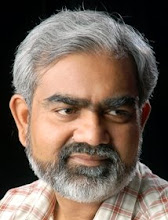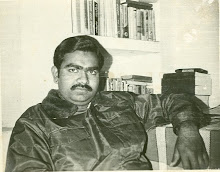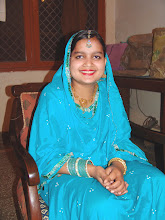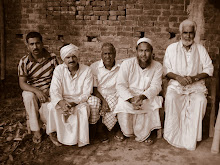Curriculum of Religious Seminaries and Contemporary Obligations
Anjum Naim
There is a long historical period involved between two major milestones in the system of higher education represented by Madrasa Nizamiya ,Baghdad and Madrasa Firangi Mahal, Lucknow. While the former was established by the famous Saljuq (Turkish Muslim dynasty controlling larg areas in the middle east in the 11th and 12th centuries ) minister Nizamul Mulk bin Tusi in Baghdad and Nishapur,a town in the province of Khorasan in the north eastern Iran in 1067, the latter was established by Mulla Nizamuddin Sahalawi in a sprawling bungalow, bought from a Dutch trader, during the period of the Mughal ruler Aurangzeb. These institutions were not wholly devoted to imparting religious education; they prepared their pupils for major national and administrative positions. These graduates who were experts in religious learning were indeed the backbones in the broader administration of the nation. Today, the aim of this education has changed altogether; it is devoted to imparting purely religious education. The changing political conditions from Baghdad to Nishapur and finally, to Deoband have brought about such major shifts in curriculum policy that the intellectuals have only been naturally concerned over the paradigmatic shifts taking place during all these long long years. It was this deep rooted concern for religious education that led Maulana Mohammad Ali Mugeri to establish Nadwat-ul Ulema in Lucknow in 1892. The realization for the need to acquire contemporary knowledge is now common to all those who realize the value of education, right from the madrasa graduate to an ordinary learner.
At a recent symposium on “Perspectives on Islamic Education in the 21st Century” at a place called Raichak, fifty kilometers from Kolkata, on the banks of river Hooghly. The managers of madrasas and experts in education deliberated upon the issues involvd over two days. This event sponserd by the American Embassy may also be taken as an effort on the part of the organizers and all those concerned to reflect upon the issue of incorporating contemporary knowledge in madrasa curriculum. This needs no emphasizing that the issue of madrasa education has, of ate, been engaging the attention of various institutions. Mr. Adnan A. Siddiqi, Counselor for Cultural Affairs in the American embassy, says: “Everyone knows that there is a certain difference between the modern educated Muslims and the graduates from the traditional centers of education. The effort to bridge this gap, as also to bring the madrasa curriculum at par with contemporary knowledge, can be successful only when the first step is taken by those Islamic institutions themselves who work under this system. It is only they who may understand this problem better than others.”
Those who have favored the molding of traditional education according to the needs of the times have, in every age, been fully aware of the importance of education in practical life. According to Dr.Qamruddin, who has written a good book on Madarsa education, and who looks at the problem analytically says that “the decision to relinquish Persian as an official language in 1837 proved detrimental to the interest of the madrasas.” Under Mughal rule , the madressas were a training groud for court and government officials. Once the British replaced Islamic l with the new Indian penal code, the expertise learned at the Madrassas was no longer useful for officials assigned to carry ouit civic duties. The position of Mufti and Qazi were abolished under the new government system. Graduates of madrassas found themselves unemployable in their chosen professions and a madrassa education came to be seen as one that imparted religious knowledge only.The educational aims of the institutios changed accordingly. Instead of attending to economic and other needs, the central focus of the syllabus shifted to “the propagation of Islam and the protection of faith”. Maulana Riyasat Ali Bijnori, a teacher of Hadith (Traditions) and theology in Drul Uloom Deoband, says, “we don’t feel the need to make any changes in the syllabi because it already meets our aims which are quite clearly the ‘propagation of Islam and protection of faith’. Those who want to attend the institutions of contemporary education are free to do so. We neither deny the utility of those institutions nor oppose them in any manner.” Yasser Nadim, a young graduate of Darul Uloom, Deoband, who is also a Green card holder and teaches at the Institute of Islamic Education, a madrasa in Chicago puts it in these terms: “This curriculum needs no drastic changes but it is only inevitable that contemporary knowledge be incorporated into it. If this can not be done for some reason, the aims of ‘propagating Islam and protecting the faith,’ laid down by our elders, cannot be fulfilled.” He asked “ when you don’t know English how you will perform your duty of “ propagating Islam and protecting the faith” in the western society.”
Whenever deliberations are held regarding the modernization of madrasa education, certain questions are invariably raised. They include: whether madrsas can meet the challenge of the modern age, and why the cuuriculum is not revised when the need for its updating has been felt for years now. It may be said that practical steps are not taken because the current syllabi does not have a clear format and that every madrasa has its own curriculum. Further, modern educationists have not yet provided a clear model to create a parallel system of education. This is the reason why the madrasa administrators are not convinced by the arguments extended by the advocates of curriculum modernization. One might recall that Nadwat-ul Ulema was established to bring educational reforms amongst Muslims, and initiate a movement of reforms in the curriculum. Maulana Shibli Nomani was appointed its Manager in1905 and he proposed to start the teaching of Engish in Nadwa. For quite a while, however, Nadwa remained indifferent to this proposal. This is the reason why, in spite of all its claims, Nadwa is not much different from other madrasas even today.
Warren hastintgs, the governor of Bengal, laid the foundation of Madrasa Alia in Kolkata in 1781 to meet the educational requirements of Muslims. He made slight changes in the current curriculum of the madrasas and implemented the high school syllabi through the Anglo-Persian Department in order to bring it closer to contemporary requirements. A network of madrasas spread all over Bengal along the lines of Madrasa Alia. Dr.Syed Zafar Mahmood, o n special duty in the prime minister’s High level committee on Muslimd , makes a point when he asserts that: “Among all the madrasas all over the country, the ones in Bengal are the best, and their graduates are quite useful and relevant in the contemporary scenario.” He was referring to the reputation the Bengal madrassas have for being well- organized and for providing some aspects of pratical, contemporary education , along with religious instruction. The establishment of Madrasa Boards afforded space to the government to enter this sphere in some way or the other, although the education in the subjects like tafseer (commetary), hadeeth (Tradition), fiqh (jurisprudence) and other religious subjects continued as usual. Abdul Mannan Mulla, a teacher in a Kolkata madrasa, who also participated in the conference on Islamic education held in Raichak, says: “I neither feel intellectually deprived because of this knowledge which the students of Deoband consider to be a cause of pride, nor consider myself detached with contemporary obligations.” Considering the political conditions under which an institution like Darul Uloom Deoband was established and the aims its founders had nurtured, even an inkling of government interference was enough to upset them. When Maulana Azad, the strong supporter of reforms in curriculum, wanted to implement his proposal in Nadwa after India’s independence, he could not convince even those ulema who valued and valorized him. It must be borne in mind that if the management of the madrasas maintain a very cautious attitude regarding reforms, the major reason for this, as Maulana Reazul Hasan said, is that a big section of the reform-loving persons, who advise the madrasas to accept the new initiatives, are themselves involved in opening avenues for the interference by the government, may be directly, or sometimes even indirectly. Doubts raise their heads when the madrasas are prodded to register under the Societies Registration Act in order to receive government grants. Maulana Mohammad Reyazul Hasan, a teacher of Mazahirul Uloom, Saharanpur, vents his apprehensions when he says that “We are also aware of the contemporary challenges but where is the guarantee that the members of the society registered under the Act of 1860, either because of internal exigencies or external pressure, would not meddle with the pure religious aims of our institutions. Whatever has happened regarding the minority status of Aligarh Muslim University is for everyone to see.”
The question, therefore, is not as to how justifiable are these doubts and whether they would really interfere with the management of the madrasas or their curriculum, the issue is that those who talk of reforms also need to think that these sentimental issues of the Muslim community must be considered at a practical level rather than at a sheer logical level, and also with an eye on loss and gain. Professor Syed Mohammad Iqbal Hussain, the Vice-Chancellor of the University of Calicut says: “Any state interference or intervention of a politically oriented religious leadership will surely jeopardize the well maintained (apoliticsm?) and virtual democracy of the madrasa system in the country. I fear that this will give way to more explicit illegal religio-political dealings since the madrasas have a massive influence on Indian Muslims.” This is the reason why Professor Hussain is of the opinion that instead of making drastic changes in the madrasa curriculum, more and more modern educational institutions should be opened in the areas with Muslim concentration where even the madrasa graduates may seek their admission. In this regard, he gives the example of successful experiments carried out in Kerala where madrasas are not annexed to mosques but to modern schools. Both the institutions take care of each others schedule so that the students may not face any problem.
The system of education being followed in Kerala and Bengal has already established their utility. One may not, however, keep one’s eyes closed to the sad condition of thousands of madrasas all over the country, especially in the northern part of India, that provide practical and ideological guidelines to the madrasas of the Indo-Pak subcontinent, and also Bangladesh. The drive for globalization in modern times has turned the world into a small village. It is no longer possible for anyone to keep within the strict confines of a certain knowledge system and culture. We live in a multicultural society where people with different faiths live with their cherished ideals and influence each other. The need for a just society is being felt much more now than ever before. As such, Maulana Fazlur Rehman Faridi, economist and editor of Urdu monthly Zindagi-e-Nau asserts: “The new changes call for relinquishing the attitude of “safety and protection”. We have to see as to how Islamic teaching may face the new challenges, and as to what special role our educational system may play in order to create a just society. We have to see as to how that society may produce such individuals who may play a positive and constructive role in contemporary times.”




















No comments:
Post a Comment